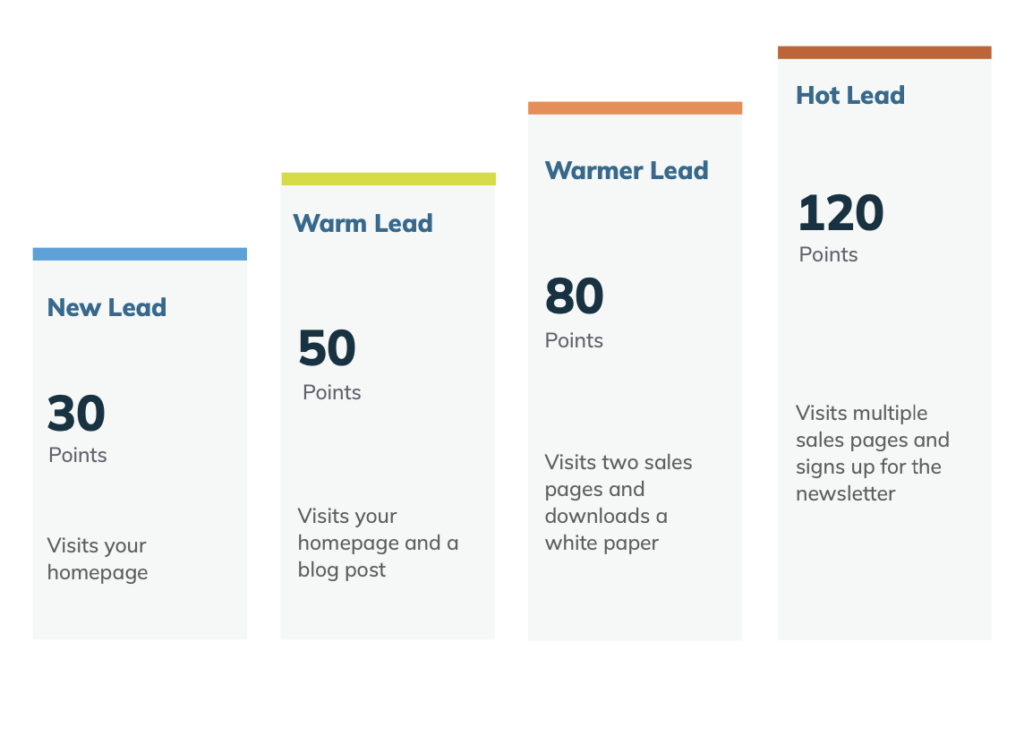As marketers, we’re always concerned about generating more leads. However, we also know that not all leads eventually end up paying for your products or services. In other words, not all leads end up being paying customers or loyal fans.
Moreover, no business wants to spend extra time trying to qualify a lead that will take way too long to convert when there are warmer leads that just need that extra push to convert! As the saying goes: ‘time is money’. So, how can businesses make objective and data-driven decisions to ensure that
That’s where Lead Scoring comes into play. We’ll walk you through what Lead Scoring really is, why it matters to your business, and our 3 sure-win ways to improve your Lead Scoring methods.
Did you know?
Companies that have taken the initiative to implement lead scoring efforts into their marketing strategy enjoy 33% higher revenue growth.
What's Lead Scoring?
Lead scoring is the process of assigning numerical values to your leads based on their online interactions, and it is a great indicator of whether a particular lead is in need of nurturing.
In short, Lead Scoring is about assigning value to certain data that you think is important to consider a lead as ‘warm’ or ‘hot’. The total of these values will determine how ready your lead is to convert.
Via Lead Scoring, businesses can make more informed and data-driven decisions, remove the reliance of gut feeling, and see prospects and leads in a more objective light. By doing this, businesses can maximise their sales efficiency!
3 Ways to Improve Lead Scoring:
1. Decide on the kind of data to be considered high or low value
Not all data that you collect from your prospects would matter. For example, if you’re a business that conducts online classes, the email details of a lead would be of higher value compared to the location of the same lead. This is because with the email of your lead, you will be able to send them offers whilst being an online class, your leads can join your classes from wherever they are in the world.
We recommend taking a step back to pinpoint the kind of data that would be valuable for your business in the long run. Furthermore, regular maintenance and auditing is required to make sure that the data that you’re scoring continues to be relevant.


2. Decide on the threshold for ‘sale-readiness’
Once you’ve decided on the values to be assigned to each data collected from your leads, it’s important to set a threshold of what your business will consider a cold, warm, or hot lead. We’re curated a chart below to serve as a benchmark of how the industry gauges leads to be in each category. You may cater these thresholds to your own business needs to ensure better efficiency within your sales and marketing teams.


3. Add negative scoring factors
With the primary purpose of lead scoring being to move your leads down the pipeline, it’s also important to add negative scoring factors to your lead scoring framework. This would mean for certain actions performed or not performed during a period of time, the score of the lead should decrease accordingly to signal your sales team to allocate their resources elsewhere.
There are many interactions (or the lack of it) that businesses may consider as negative scoring factors. These include:
- Leads who unsubscribe to your newsletters
- Leads that have been cold for more than 6 weeks
- Leads that entered your website but didn’t spend more than 30 seconds on it
By segmenting audiences based on Lead Scoring, one could also save time in the long run by being able to determine audiences that are low priority and do not require further nurturing.
Did you know?
Companies that implement lead scoring enjoy 28% better sales productivity!
What's next for you?
Lead Scoring is more than just a marketing strategy; it’s all about making the best out of your resources (read: time) to ensure that your business is working at optimal efficiency. With Lead Scoring, your business can make data-driven decisions objectively, especially when things get busy.
Lead Scoring is a feature offered by many marketing automation platforms such as Constant Contact Lead Gen and CRM, which can help make your life that much easier when it comes to managing your business!





